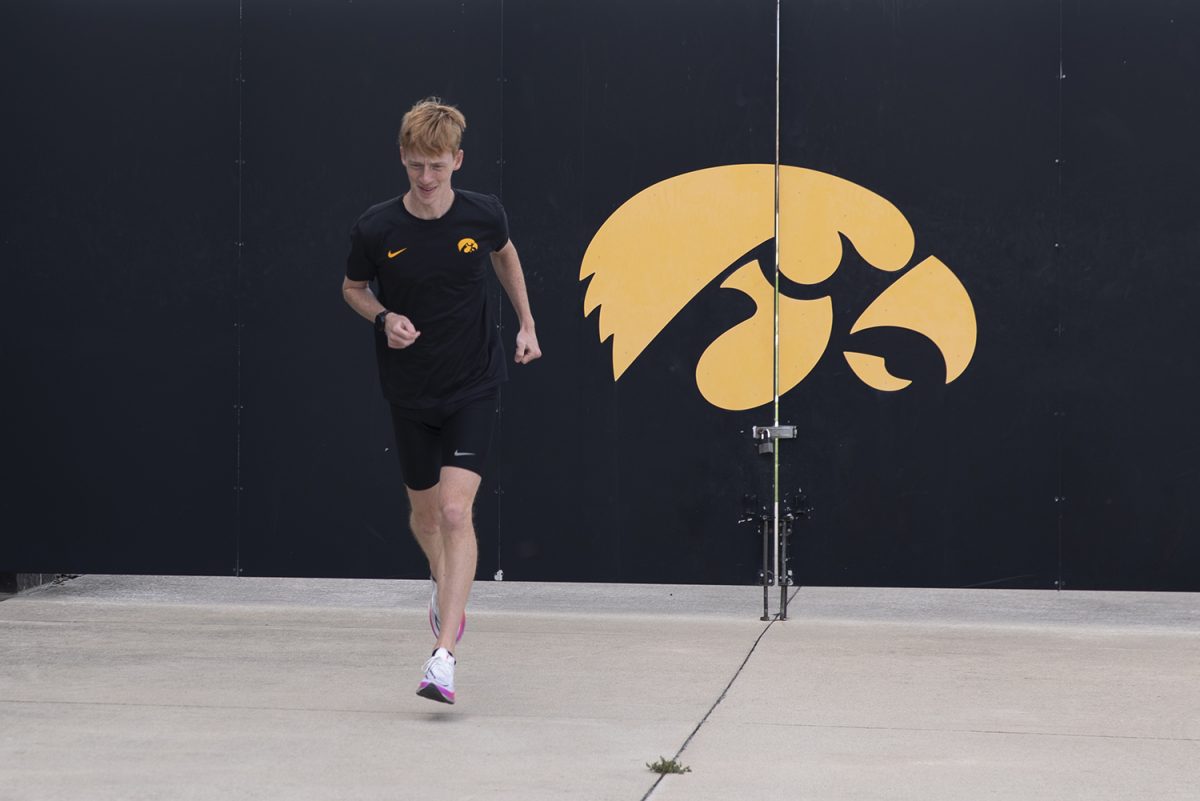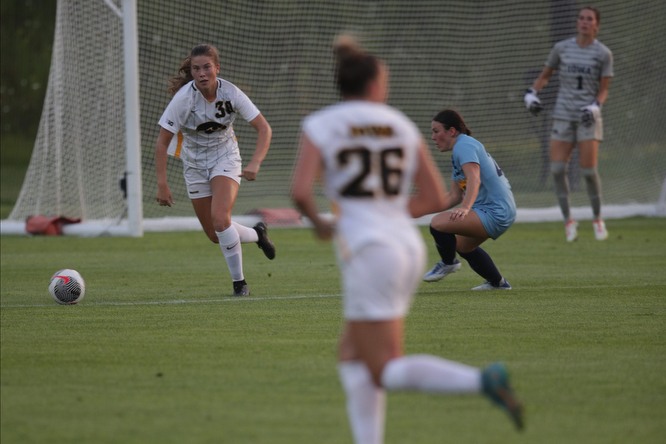Two Hawkeye athletics programs are on the rise.
Men’s and women’s gymnastics may not be the most popular sports, but both squads showed this past season that, with the proper support, each can emerge as a national force.
That support reached a new level in December 2014, when work began on a new training facility twice the size of the old one, complete with foam pits, trampolines, and a tumbling track.
And for the past few weeks, the athletes have enjoyed the benefits of their new playground.
“We have matured to a place where this facility will have an immediate impact on the caliber, quality, and culture of what we do here at Iowa,” men’s head coach JD Reive said.
He is entering his sixth season at the helm of the men’s team. Since his arrival, the program has surged into one of the country’s best. In two of the last three years, it has reached the NCAA Finals twice, including a sixth-place finish in April.
The women’s team, led by head coach Larissa Libby, last season earned a top-25 ranking for the first time since 2011, ending the year at No. 23.
Now, she is poised for the program to take the next step.
“Every piece of equipment goes into a hard landing, a soft landing, or a medium landing,” Libby said. “And that’s the biggest step for me; that’s the biggest the biggest difference for us.”
The additional equipment gives the teams a new competitive edge in training, mostly because the injury risk is minimized.
Dismounts off equipment, such as the high bar and the vault, can be dangerous when landing on competition mats even if a gymnast is just slightly off in her or his routine.
But with foam pits and softer landing mats, the athletes can do more repetitions and push themselves to perfect tougher skills.
“Just with the overall motivation in the gym, kids are able to train at a much more intense level but not be concerned with the repetitions necessary to actually master stuff,” Reive said.
“We didn’t increase the number of events that we had available to work on, we increased the safety and efficiency of what we could do.”
Because repetition is such a huge component of training in the sport, the new landing equipment also should equate to less fatigue late in the season. When gymnasts’ legs take a daily pounding from landing on hard mats, it can slowly take a toll.
It’s an effect that Libby says affected her team down the stretch in this past season, when it finished fifth out of six teams at the NCAA Regional in Auburn, Alabama, after poor performances on the floor exercise plagued the GymHawks throughout the meet.
But training isn’t the only dynamic the new facility brings to the programs. Perhaps as big as anything is the boost it’s expected to provide for recruiting.
“We feel like we’re a fantastic program with a lot of upside, but with the new facility, I feel like now we’re the total package,” Libby said. “It was a little harder of a sell before, because the elite-level athlete wasn’t looking here and saying, ‘Oh, yeah, I can maintain my training here.’ ”
In the short term, the two teams are focused on using it to their advantage and maximizing their training before the next season gets underway in January 2016.
For senior-to-be Jack Boyle, that the Athletics Department funded the project also gives the athletes a boost.
“It gives you a purpose,” he said. “You have to work to show you deserve this. It also shows the respect for the program a little more.”






